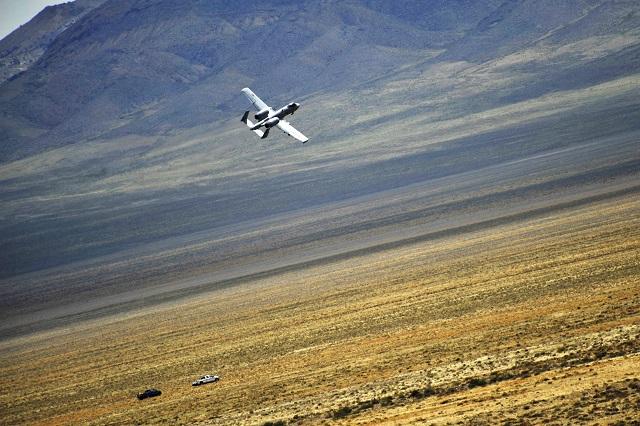
Sea State
The Indian Navy was hit by a massive data leak last week after sensitive technical data about its new Scorpene class attack submarines fell into the hands of The Australian. An inside source at a subcontractor for DCNS (the French defence contractor that builds the submarines) is thought to be responsible, although the motive behind the leak remains unclear. This raises worrying questions for Chile and Malaysia, which also operate the Scorpene. Less clear are the implications for Australia, which recently awarded DCNS the rights to a $50 billion contract to build its fleet of future submarines.
In an interview with ScoutWarrior last week, retired US Navy Rear Admiral Charles Richard stated that the Navy and its industrial partners have the capacity to build two Virginia class nuclear-powered attack submarines per year in the 2020s. It was previously thought that only one Virginia class could be built per year due to construction beginning on the Columbia class ballistic missile nuclear submarines around the same time. This newfound industrial capacity will go a long way to help mitigate the US Navy’s looming shortage of attack submarines in a time when the number of countries operating submarines has increased dramatically.
Flight Path
In a report released last week, the US Government Accountability Office notes that the Department of Defense and Air Force are lacking quality information on the implications of retiring the A-10 Thunderbolt (aka Warthog); particularly around the close air support capability gap it may pose. The report focuses on the need for Air Force guidance prior to making divestment decisions to ensure mitigation strategies, such as with the A-10, are well informed. The US Air Force’s decision to divest the Warthog has been a source of confusion over the past year, but the retirement of the aircraft has now been postponed until 2022.
Following on from last week’s headlines, the pilots of the two US F-22 Raptors that intercepted Syrian Su-24 have spoken out about the encounter. The pilots, who are trained to fly undetected, said they got close enough to the Su-24 to check that it wasn’t armed. Showing off its stealth capabilities, the F-22 followed the Su-24 for three loops and came within 2,000 feet of the plane without the Syrians’ knowledge. Check out this Aviation Week gallery detailing the low-observable technology of the F-22 and other stealth fighters.
In other news, while the debate around commercial and private use of drones remains hot, so do these unmanned aircraft vehicle deliveries by Domino’s. It looks like the Kiwis may be claiming an unprecedented victory in the drone war.
Rapid Fire
The future of the US Army’s XM 25 ‘Airbust’ weapon—lauded as a game-changer in counter-insurgency operations—is in jeopardy. Through laser rangefire technology, the weapon fires a high-explosive airburst round pre-programmed to detonate above or behind land obstacles, targeting enemy soldiers taking cover. However the weapon may be phased out amidst reports of regular malfunctions and budgetary concerns.
The battlefield in Syria just got more crowded, with Turkey undertaking its first major incursion across the border. Turkish special forces, tanks, and warplanes entered Syria’s north-east, supporting the Free Syrian Army operation to expel Islamic State from Jarabulus. The mission advances Turkey’s interest in halting Kurdish expansion along the border, but has drawn criticism from the US, which claims that clashes between Turkey and the Kurds undermine the battle against IS. The gains in Syria are mirrored in Iraq, where the anti-IS coalition are advancing on Mosul. According to Kevin Knodell at War is Boring, while air and special operations forces dominate news, conventional artillery troops—including US ground forces—are central to coalition efforts to degrade IS.
Iran has acquired ‘one of the most advanced tanks in the world’ according to its defence minister—but there’s cause to be sceptical about Iran’s claims. Robert Beckhusen writes that the tank, dubbed ‘Karrar’ may be a locally made knock-off of Russia’s prized T-90, or even a measly upgrade on the T-72; Iran has a history of talking up ‘breakthrough’ technology. Seeing how this T-90 fared against a US-made TOW in Syria, you’d hope some tweaks have been made.
Zero Gravity
China has unveiled designs for an orbiter, lander and rover for its first unmanned mission to Mars in 2020. Over the planned decade long trilogy of missions, China hopes to study the atmosphere, soil and water sources on the red planet. After seven months orbiting Mars and releasing sensory probes, a solar powered rover will deploy to investigate the planet’s surface. China has officially joined the race to Mars with NASA and the ESA also planning Mars missions for 2020.
A consortium of companies including Amazon, CIA affiliated CosmiQ works, DigitalGlobe and Nvidia have collaborated to build SpaceNet—a public database which can be used by companies to map, identify and search for solutions using satellite imagery. The aim is to automate parts of image analysis and design AI based analytic tools to sift through vast quantities of satellite data that gets produced by commercial and government entities.
An international team of astronomers led by Guillem Anglada-Escude of Queen Mary University, London have discovered a possible habitable planet named Proxima Centauri B, 4.2 light years away. The planet lies 1.295 parsecs away from a red dwarf star with a mass of around 12% of our Sun. The team has cautiously theorised that this could give Proxima B a temperate climate—increasing the likelihood that there may be water present on this new planet.